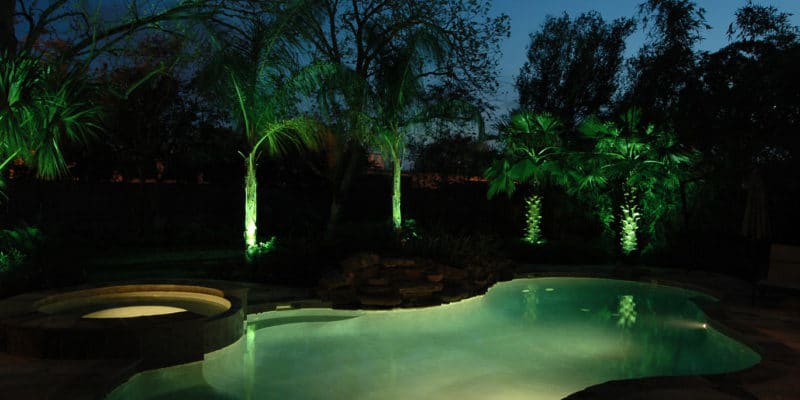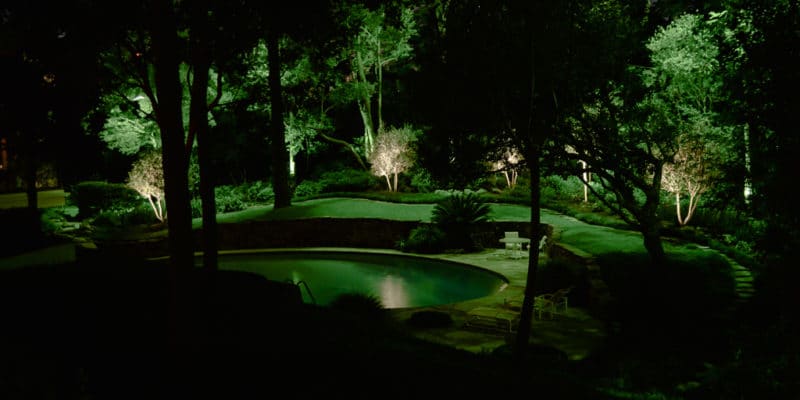How To Convert Your Houston Outdoor Lighting System From Halogen Into LED
There are numerous reasons why you may want to consider converting your outdoor lighting system to LED lamps from halogen lamps: you might want to reduce your energy bills, or maybe expand your current outdoor lighting system, or perhaps you would just like to reduce the amount of routine maintenance that you need to do. Whatever the case may be, there are no disadvantages to using LED lamps as part of your outdoor lighting system. for inspiration or examples of LED’s used in outdoor lighting systems, take a look at Our Work!
Use LED To Save Money
It is amazing how much your energy bill can be reduced by using LED lamps. Less electricity is used by LED lamps compared to traditional halogen lamps. Typically low-wattage LED outdoor lights use 80-90 percent less electricity compared to halogen systems. The reason why less electricity is used is LED lights reduce your outdoor system’s overall electrical load. For a majority of outdoor lighting systems, when they are converted to LED it takes the load off of the operational costs of the outdoor lighting system. In most cases, The average electrical bill for an outdoor lighting system using LED can be reduced down to $3-$5 a month.
Reduce Routine Maintenance and Lamp Replacement
The overall costs of routine maintenance and replacing lamps are also reduced when you switch over to LED. With halogen systems, lamps must be replaced about once a year. You need to take into consideration the cost of replacing each lamp every year and the cost of every individual lamp. However, if you switch to LED lamps, it eliminates how often you have replaced your system’s lamps. A majority of reputable LED lamps in today’s marketplace are rated to last for 10 years at least and have a 5-year replacement warranty. That is because high quality LED lamps are designed to last. Although LED lamps might be more expensive upfront, they actually pay off very fast. One thing that needs to be noted is that switching over to LED lamp doesn’t completely eliminate needing to service the system and maintain its optimal operating condition.
Provide Your System With More Lights
When your lighting system is converted from halogen lamps over to LED lamps it also takes off an electrical load from your overall lighting system, which allows room for additional lights. Allow me to explain this further. Any lighting system has a set amount of wattage that it can handle, which will depend on the kind of transformer it has. For example, a 300-watt transformer is restricted to being able to support 200 watts without tripping and possibly overloading the system. With halogen systems, 20-35 watts is used by each lamp. With a maximum 260 watt capacity, a halogen system only is able to support 8-13 fixtures or lamps without possibly overloading. Theoretically, if the same 300-watt transformer is taken, and 4 watt LED lamps are used rather than 20-watt halogen lamps, the same system will be able to support 65 fixtures or lamps rather than 13 (when properly designed). If you retrofit your existing halogen system with LED lamps, that will reduce how much electricity is used. When a load is taken off of your system through LED lamps there is more room for adding fixtures without needing a bigger transformer. It is very important to understand there are numerous things that need to be taken into consideration if you would like to add more lights to your system after retrofitting it with LED lamps. Are your lines properly balanced? How will voltage drops affect more lights being added? How long will your wire runs be? Each system is uniquely engineered and needs to be approached in a different way. Consulting with your lighting specialist regarding LED lights as well as other lighting solutions is always a good idea.
Contact us or call today to revolutionize your space.


